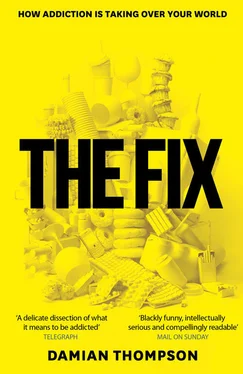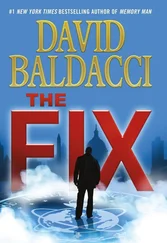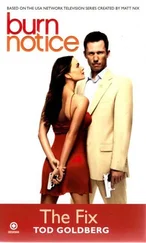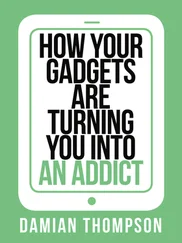‘Heroin addiction spread like the plague,’ writes McCoy. ‘Fourteen-year-old girls were selling heroin at roadside stands on the main highway from Saigon to the US army base at Long Binh; Saigon street peddlers stuffed plastic vials of 95 percent pure heroin into the pockets of GIs as they strolled through downtown Saigon; and “mama-sans”, or Vietnamese barracks’ maids, started carrying a few vials to work for sale to on-duty GIs.’ 13 Конец ознакомительного фрагмента. Текст предоставлен ООО «ЛитРес». Прочитайте эту книгу целиком, купив полную легальную версию на ЛитРес. Безопасно оплатить книгу можно банковской картой Visa, MasterCard, Maestro, со счета мобильного телефона, с платежного терминала, в салоне МТС или Связной, через PayPal, WebMoney, Яндекс.Деньги, QIWI Кошелек, бонусными картами или другим удобным Вам способом.
By the summer of 1970, virtually every enlisted man in Vietnam was being offered high-quality heroin. Almost half of them took it at least once; between 15 and 20 per cent of GIs in the Mekong delta were snorting heroin or smoking cigarettes laced with it. Ironically, heroin use soared after the Army cracked down on the much more easily detectable habit of smoking pungent marijuana. But the key factor, argues McCoy, is that drug manufacturers could make $88 million a year from selling heroin to soldiers; no wonder that ‘base after base was overrun by these ant-armies of heroin pushers with their identical plastic vials’. Rumours spread that the North Vietnamese were behind this intense marketing campaign – what better way to immobilise the enemy? But the truth was that South Vietnamese government officials were protecting the pushers.
In any case, combat troops avoided heroin use in the field: being stoned, especially on a drug as soporific as heroin, was more likely to get them killed. But they made up for it when they returned to base. One soldier came back from a long patrol of 13 days; his first action was to tip a vial of heroin into a shot of vodka and knock it back. 14 Конец ознакомительного фрагмента. Текст предоставлен ООО «ЛитРес». Прочитайте эту книгу целиком, купив полную легальную версию на ЛитРес. Безопасно оплатить книгу можно банковской картой Visa, MasterCard, Maestro, со счета мобильного телефона, с платежного терминала, в салоне МТС или Связной, через PayPal, WebMoney, Яндекс.Деньги, QIWI Кошелек, бонусными картами или другим удобным Вам способом.
Panicky headlines about the ‘GI epidemic’ started appearing in American newspapers. The Nixon administration was terrified of a crime wave caused by the return of thousands of desperate junkies to American cities. But it never materialised. Instead, the addicted soldiers cleaned up their act – fast.
We know this because the US government, anticipating disaster, commissioned a medical study that recruited more than 400 returning soldiers who snorted, smoked or injected heroin and described themselves as addicted (making it possibly the largest ever study of heroin users). To researchers’ surprise, back in the United States only 12 per cent of these addicts carried on using heroin at a level that met the study’s criteria for addiction. 15 Конец ознакомительного фрагмента. Текст предоставлен ООО «ЛитРес». Прочитайте эту книгу целиком, купив полную легальную версию на ЛитРес. Безопасно оплатить книгу можно банковской картой Visa, MasterCard, Maestro, со счета мобильного телефона, с платежного терминала, в салоне МТС или Связной, через PayPal, WebMoney, Яндекс.Деньги, QIWI Кошелек, бонусными картами или другим удобным Вам способом.
This is really powerful evidence that changes in social environment can dramatically affect people’s drug-taking habits. As Professor Michael Gossop, a leading researcher at the National Addiction Centre, King’s College, London, explains: ‘The young men who served in Vietnam were removed from their normal social environment and from many of its usual social and moral constraints. For many of them it was a confusing, chaotic and often extremely frightening experience and the chances of physical escape were remote except through the hazardous possibilities of self-inflicted injury.’ 16 Конец ознакомительного фрагмента. Текст предоставлен ООО «ЛитРес». Прочитайте эту книгу целиком, купив полную легальную версию на ЛитРес. Безопасно оплатить книгу можно банковской картой Visa, MasterCard, Maestro, со счета мобильного телефона, с платежного терминала, в салоне МТС или Связной, через PayPal, WebMoney, Яндекс.Деньги, QIWI Кошелек, бонусными картами или другим удобным Вам способом.
Gossop uses the phrase ‘inward desertion’ to describe what heroin offered the soldiers: a cheap trip to another world.
The scared, disorientated soldiers in Vietnam were being offered a chemical fix to relieve their fear. The social and psychological pressure to do something they would never dream of doing in America – take heroin – was intense: one in five slid all the way into addiction. But, once home again, they weren’t scared any more. They weren’t mixing with other users. The drug was expensive, hard to find, low-grade and highly illegal. The pressure went into reverse. In other words, the same combination of social and psychological factors that turned these men into addicts explains why they were able to stop.
True, these were remarkable circumstances. So we might expect other addicts, whose initiation into drug use was less dramatic and more gradual, to recover at a slower rate. And that’s precisely what those four big epidemiological studies show: they paint a picture of users slowly changing their behaviour when their circumstances changed. They don’t support the progressive disease model. The Vietnam statistics, meanwhile, directly undermine it. The US government went to a lot of trouble to make sure that the soldiers it was testing were addicts. Are we supposed to believe that the 88 per cent who later kicked the habit were misdiagnosed? Or that being drafted to fight in heroin-saturated Vietnam ‘doesn’t count’ because it was such an unusual situation?
The Vietnam survey identifies a key factor in addiction: availability. To quote Michael Gossop: ‘Availability is such an obvious determinant of drug taking that it is often overlooked. In its simplest form the availability hypothesis states that the greater the availability of a drug in a society, the more people are likely to use it and the more they are likely to run into problems with it [my italics].’ 17 Конец ознакомительного фрагмента. Текст предоставлен ООО «ЛитРес». Прочитайте эту книгу целиком, купив полную легальную версию на ЛитРес. Безопасно оплатить книгу можно банковской картой Visa, MasterCard, Maestro, со счета мобильного телефона, с платежного терминала, в салоне МТС или Связной, через PayPal, WebMoney, Яндекс.Деньги, QIWI Кошелек, бонусными картами или другим удобным Вам способом.
Читать дальше












